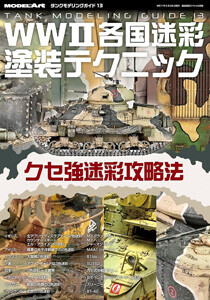TANK MODELING GUIDE [13] - WWII Camouflage Painting Techniques by Nation
Mastering Bold Camouflage Patterns
In an era when only the naked eye or optical scopes were available for observation, bold camouflage patterns played a vital defensive role. They delayed enemy detection, distorted the tank’s shape, misled the direction of movement, and made aiming more difficult. During World War II, many nations adopted camouflage painting, although there were cases where it was omitted due to wartime circumstances or the need to speed up production. This guide introduces the painting and weathering techniques used to replicate the distinctive camouflage patterns employed by various countries during WWII. Learn how to master diverse and unique camouflage methods—including airbrushing, hand painting, and masking—to take your modeling skills to the next level.
Featured Camouflage Schemes by Nation:
United Kingdom
North Africa Two-Tone Disruptive Camouflage – MiniArt M3 Grant
Counter-Shading Scheme – Stuart
El Alamein Camouflage – Sherman Mk.II
United States
Pacific Theater Two-Tone Camouflage – M4A1 Sherman
France
Large-Area Two-Tone Camouflage – Char B1 bis
Soviet Union
Anarchic Three-Tone Camouflage – SU-152
Japan
Three-Tone Camouflage with Yellow Bands – Type 97 Chi-Ha
Italy
Grid Pattern Camouflage – Semovente M42 da 75/34
Hungary
Three-Tone Camouflage – Zrínyi
Finland
Nordic Three-Tone Camouflage





